Getty
Ramadan is a sacred time of year for Muslims.
Recognized as the ninth month of the Islamic calendar and a holy month of fasting, the religious holiday marks the time when Muhammad received the initial revelations that would become the Quran.
Reading the Quran, Islam’s holy book, is among the rituals practiced throughout the 29 to 30 days — but the most significant tradition synonymous with Ramadan is fasting.
Fasting during the month of Ramadan is one of the Five Pillars that make up the core of Islam, in addition to the profession of faith (Shahada), prayer five times a day (Salat), giving alms to charity (Zakat), and pilgrimage to the Mecca (Hajj), according to BBC.
Since Ramadan follows the lunar Islamic calendar, the holiday commences when the first crescent of a new moon is spotted. This means that Ramadan usually falls during different times of the year, and dates can vary across countries as well.
Here’s what you need to know about Ramadan in 2022, including when it takes place, how it’s observed, and everything in between.
When is Ramadan in 2022?
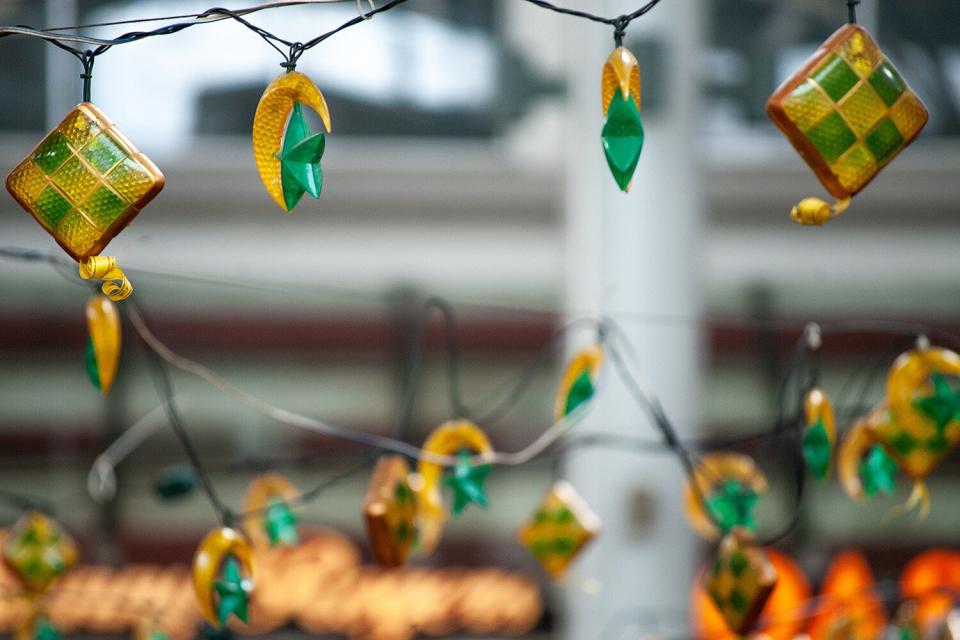

Getty
In correspondence with the first appearance of the crescent moon, Ramadan starts at sundown on April 2 and lasts through May 1 in the United States this year, per The Old Farmer’s Almanac.
The religious holiday begins 10 to 12 days earlier each year since the Muslim calendar is shorter than the modern-day Gregorian calendar. Per Britannica, this causes Ramadan to fall in every season throughout a 33-year cycle, despite the word’s literal translation meaning “the hot month” in Arabic.
Who celebrates Ramadan?
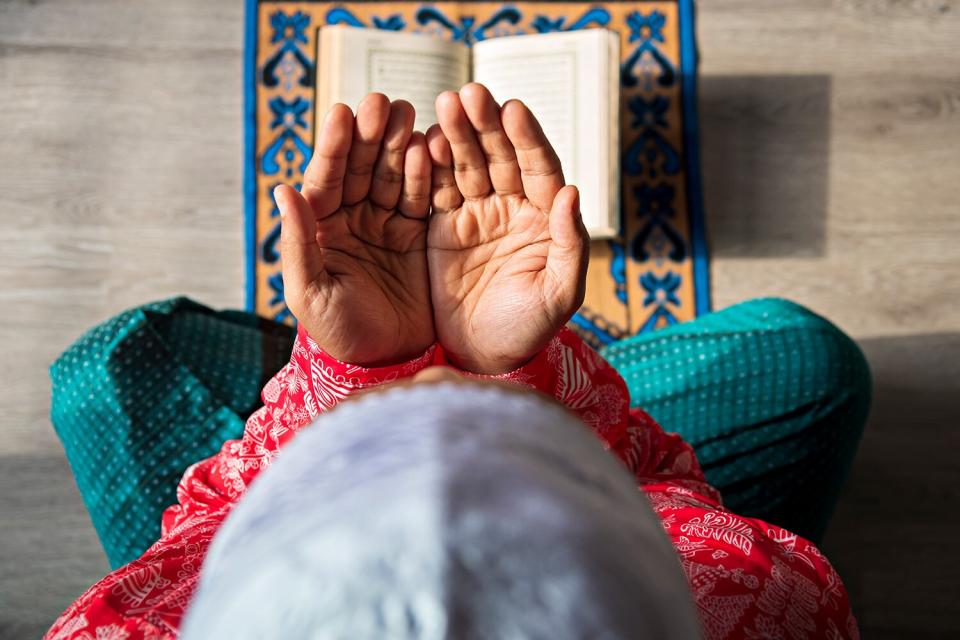

Getty
While fasting is the most significant tradition Muslims observe during Ramadan, there are a few exceptions for those who practice the religion, including small children, elderly people, and individuals with illnesses.
RELATED: Iman Celebrates the Start of Ramadan as She Practices Social Distancing amid Coronavirus Crisis
Why do Muslims fast during Ramadan?
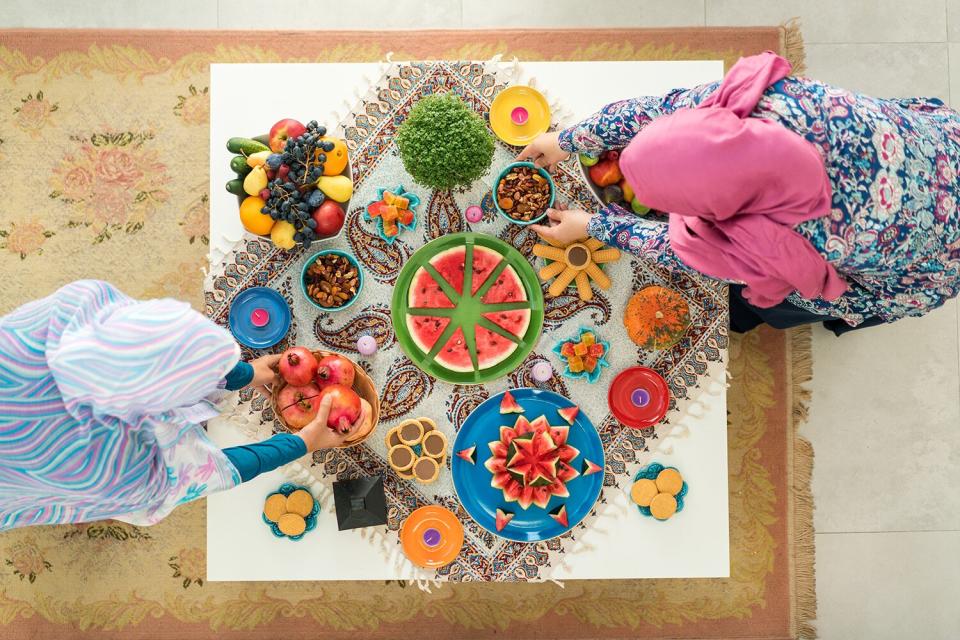

Getty
Through fasting, Muslims believe that their relationship with God will be strengthened, as it makes up one of the Five Pillars of Islam. Abstaining from eating and drinking (including water) is practiced from dawn to dusk, a time that should be devoted to strengthening one’s relationship with God, increasing prayer, charity, and generosity, and intensifying the study of the Quran.
In addition, self-restraining from sexual activity and immoral behavior are also honored. This includes refraining from impure and unkind thoughts, vulgar words, and bad deeds. It is believed that engaging in this kind of behavior is as destructive as eating and drinking.
What happens after sundown during Ramadan?
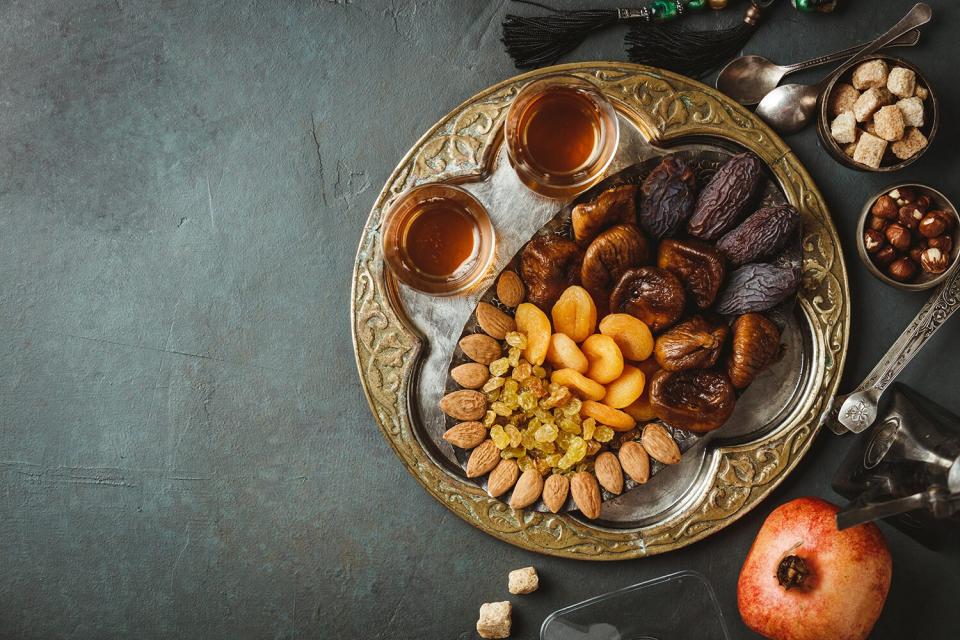

Getty
As soon as the sun goes down, Muslims break their fast with a light meal or snack called iftar before their evening prayer, known as tarawih, which some choose to perform at mosques. They also have the option to pray at home, too.
Following the evening call to prayer, Muslims often gather in each other’s homes and share a larger meal throughout the month before heading to bed (this is a continuation of the iftar). After a few hours of sleep, they wake up before sunrise to consume their first meal of the day, called suhoor, before starting all over again.
RELATED: Sinead O’Connor Reveals She’s Converted to Islam: ‘I Am Proud to Have Become a Muslim’
While the suhoor is often a hearty meal consisting of proteins to get them through the fast, fresh fruit, vegetables, bread, halal meats, cheeses, and sweets are consumed in both meals. Dates are traditionally the first food of the iftar eaten.
How is Ramadan celebrated in the Middle East?
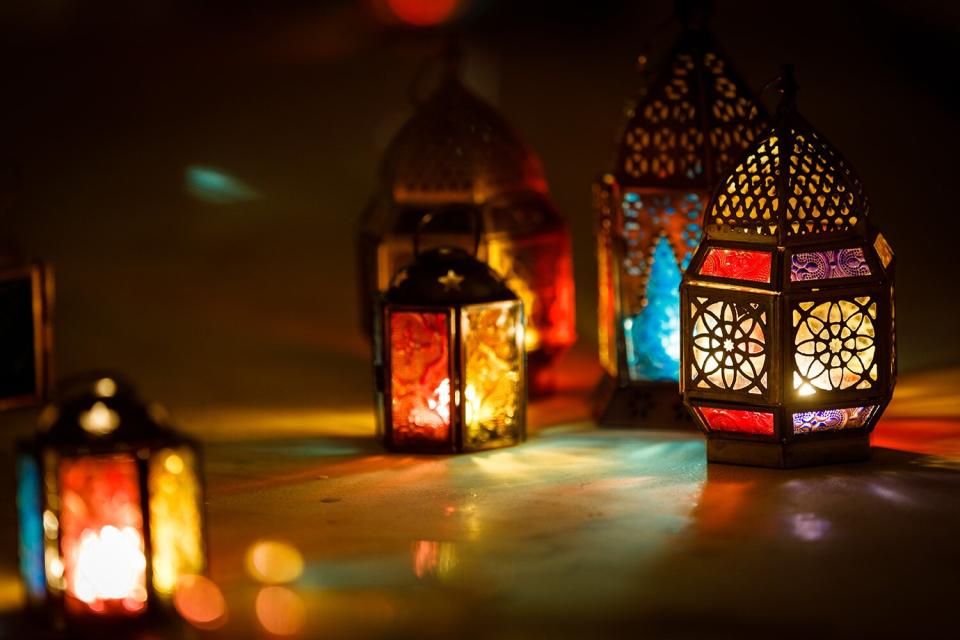

Getty
Ramadan is celebrated all over the world but is highly honored in the Middle East and North Africa region since it “has the highest concentration of Muslims of any region of the world,” per a Pew Research report.
In many parts of the region, neighborhoods are decorated with traditional lanterns and banners to welcome the religious holiday. In some countries like Egypt and Turkey, a person known as a musaharati will go down the streets with a drum to wake people for the pre-dawn meal.
Traditional Ramadan foods vary per country as well. In India, lentil dumplings in a yogurt sauce called dahi vadey are enjoyed. In China, a bread and mutton soup called paomo is popular. Diced vegetables in a salad paired with pita called fattoush is famous in Lebanon and Arab countries, while a doughy pastry known as Konafah is eaten in the Middle East.
What happens after the final day of Ramadan?
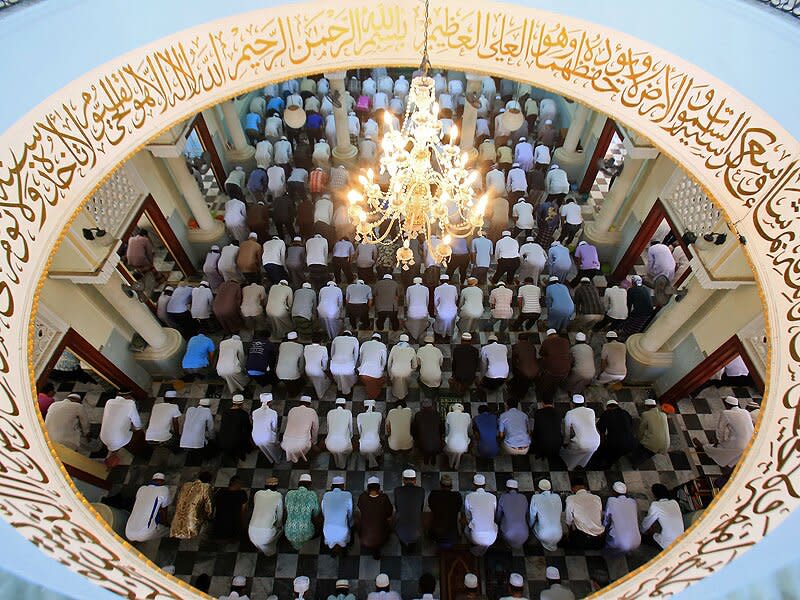

Tuwaedaniya MERINGING/AFP/Getty
Ramadan concludes with a celebration called Eid al-Fitr, which is also known as the Festival of Breaking the Fast. This takes place after the final day of the religious holiday and lasts for three days. During this time, special meals and prayers are enjoyed with family and friends in addition to the exchange of gifts.
When she was the First Lady, Hillary Clinton hosted the first Eid al-Fitr dinner at the White House in 1996. Presidents Bill Clinton and George W. Bush also hosted iftars at the White House during their respective terms, and Barack Obama followed suit, having the first White House Ramadan dinner in August 2010.


